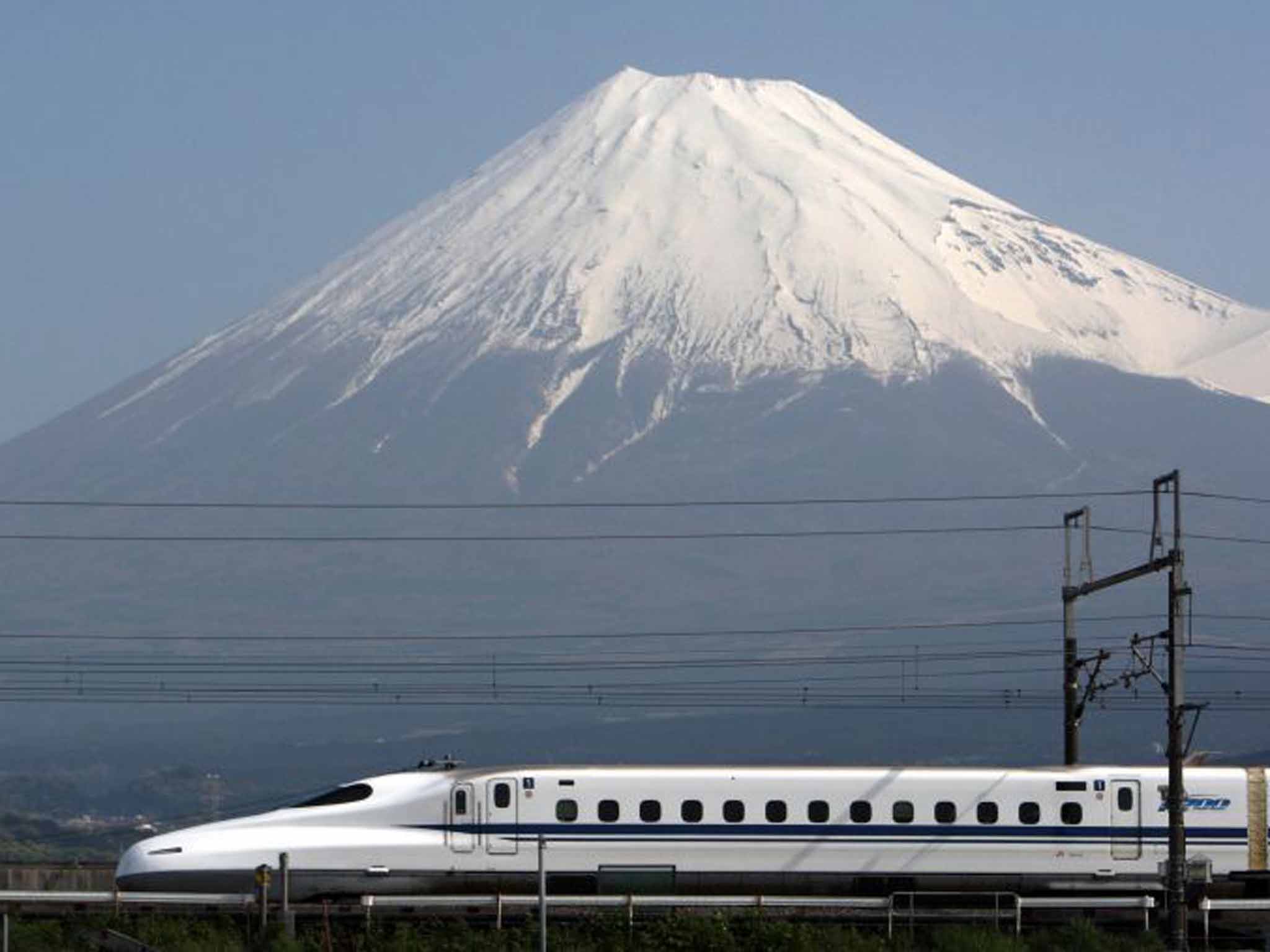Japan's bullet train: 50 years of powering ahead
Something to declare

When Japan opened its first Shinkansen (bullet train) line half a century ago, London St Pancras was filthy, damp and still host to British Rail's last leaky, grimy steam locomotives. Since 1964, Japan has developed a country-wide Shinkansen network. Not a single life has been lost over the billions of miles run in the intervening 50 years, with train delays measured in seconds. Even such minuscule delays are seen as unacceptable. And this is on a network serving some of the most intensively developed cities on the planet.
The greater Tokyo area is home to 30 million people – equivalent to nearly half the total UK population. The capital's rail hubs, where suburban, metro, underground and monorail services meet, are vast, bustling hives of activity. Tokyo Shinjuku, the busiest railway station in the world, handles almost four million passengers a day on its 36 platforms. To set that in context, that is around the number handled by London's entire Tube network each day. Which makes it all the more amazing that I saw so few uniforms on the platforms. This is probably a reflection of the Japan's general orderliness and belief in following rules, but that is not to detract from the polished, well thought-out and well-executed way in which Japanese railways work.
Wherever you look, careful thought has gone into making the experience better for passengers and operators. Instead of the British system of ticket gates, which open when you insert or tap a valid ticket, in Japan they remain open until a wrong ticket comes along, ensuring a rapid flow of passengers through the fewer gates. Which are all staffed. And on the Tokyo subway, stations illuminate on the linear maps, making navigation of the fiendishly complex system easier and quicker.
At the top end of the scale, the Shinkansen are almost hypnotic in their smooth and unruffled operation. Trains stop perfectly "on the mark" and passengers file calmly off and then on. Before each stop there are no overblown announcements about "calling points" and other guff – just a short, clear announcement in Japanese and English that the train will make a "brief stop" at whatever station. Scrolling displays repeat the announcement and illuminated arrowheads indicate on which side the doors will open.
Once on the move again acceleration is rapid. Once up to full speed the train runs ... and runs ... and runs to its next stop. And that's where the hypnotic bit comes in. The muted swish of the rails is the only sound to disturb the near silent running. Seats are comfortable, the ambience calm, and all there is to break this easy rhythm is an occasional visit by the coffee trolley. No leaves on the line. No stopping outside stations waiting for platforms. No stopping in the middle of nowhere because of a slower train in front. No ... well, you get the picture. And if a railway this hyperactive can do this, then any railway can.
Nigel Harris is managing editor of 'Rail' magazine, in which a version of this column originally appeared
Join our commenting forum
Join thought-provoking conversations, follow other Independent readers and see their replies
Comments